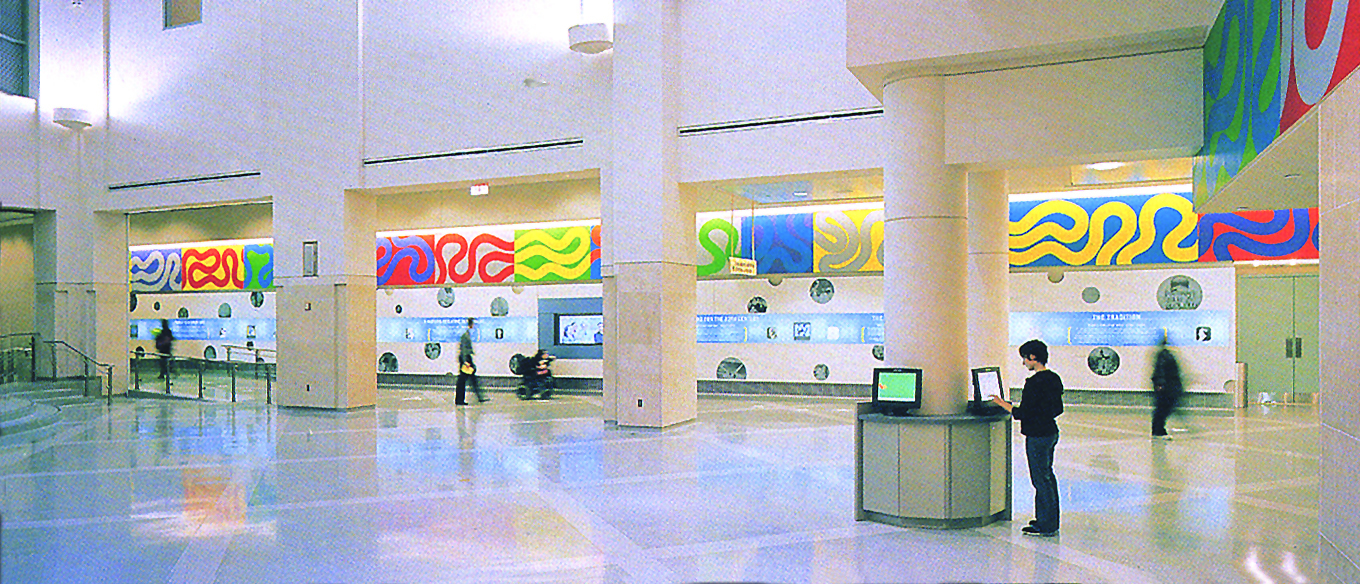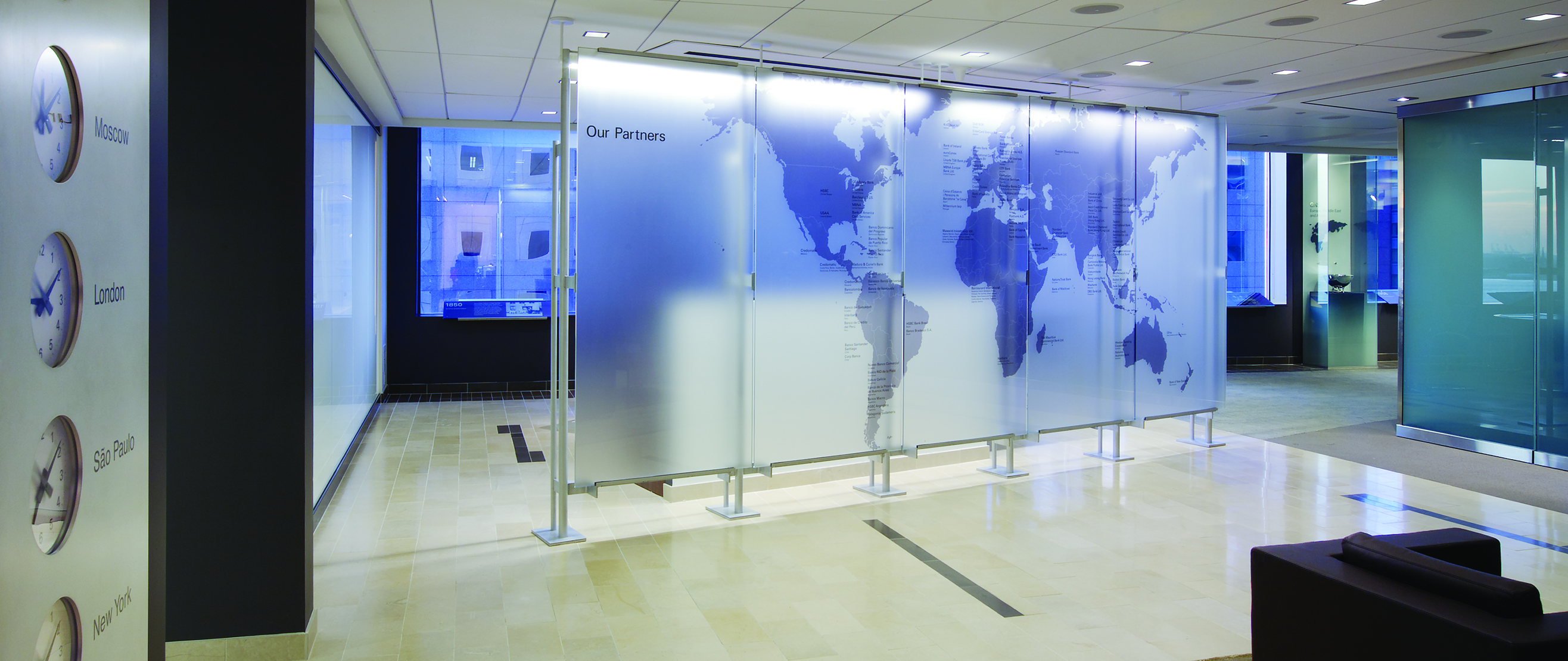
Using Corporate Heritage to Curate a Memorable Workplace 5 Guiding Principles
Posted on September 19, 2017 by Branded Environments

I visited the trading floor of the New York Stock Exchange several years ago, but I remember it like it was yesterday. The vast hall was filled with a sound like a motor running at full throttle. A business reporter with her cameraman was staking a spot next to me, preparing to go on air. Countless traders were shouting orders at each other. It was exhilarating to just stand there. “This is it! This is where it all happens!” I shouted to a co-worker.
My visit to the preserved studio of Brancusi, the late 20th century sculptor, was a very different experience. It was small, humble and dusty, but no less inspiring. A soft light quieted the visitors so they could consider the potentials of the unfinished carvings on display. The idea “quiet contemplation is needed to make art” sprung to mind.
I have walked through innumerable grand marbled workplaces that were decorated impeccably—like the spread of an interior design magazine. They were very impressive, but unlike Brancusi’s studio and the NYSE I cannot remember the names of those places.
What made the studio and the NYSE so memorable was their aura of heritage. A location with a story is a place – you can give it a name. A location without a story serves only the moment. The former provides a complete experience with a storyline that evokes meaning and stages unique experiences. Your workplace can be just as memorable if you mine your corporate heritage as a source of stories and iconic images.
Make the most of those assets by following these guiding principles—and make visits to your workplace memorable experiences that benefits your brand.
Reputational Capital
Companies with a deep corporate history have earned reputational capital (RC). RC is understood as the aggregate of multiple judgments regarding their heritage, reliability, responsibility, and trustworthiness. It is not earned with a one-time promotional pitch or advertising campaign. RC requires a history of experiences that testify in support of a performance track record. The workplace environment has a central role in imparting this reputation to visitors. A visit to the workplace allows for a holistic view of the company. Everyone who enters can see, feel, experience and eventually compile a multilayered impression of the company. Consequently, it is important to see the workplace as an experience. That guides our design approach and allows us to create a curated environment that conveys the full strength of your company’s reputational capital.

Priceless Moments digital display at MasterCard Worldwide. Employees send pictures of their own priceless moments. The piece demonstrates how the 15 year branding campaign is part of the company’s heritage.
Place-Making
The trading floor of the NYSE is no longer what it used to be. Nonetheless it still preserves its heritage through its headquarters in New York, and remains a landmark in the eyes of its stakeholders. They have mined their heritage as a resource for artifacts, stories and images. The result is a curated environment that tells an effective story.
Companies have curated their workplace in ways ranging from theming conference rooms around company milestones to producing visitor centers and heritage displays with comprehensive stories. The essential element these design elements need to be effective is that they must complete a story. A portrait of the company’s founder is only a starting a point. The New York Stock Exchange (NYSE) produces a narrative effect of communicating “the breadth and depth of their network” with its display of the “Bottonwood” agreement (the letter that started the exchange in 1792) coupled with a gift to the exchange from the Tsar Nicholas the 2nd and a signed guitar from Jimmy Page when Time Warner went public (as well as a plethora of other items). (http://www.businessinsider.sg/photos-inside-the-new-york-stock-exchange-2017-5/) The items are located on the conference room floor so they have the greatest exposure to visitors. The result is a branded environment dedicated to corporate heritage.
Curated environment at the New York Stock Exchange includes a guitar from Jimmy Page, a vase gift from Nicholas the 2nd and letter signed by Thomas Edison.
Branded Narrative
The selection of stories from your company’s history must correspond to current business strategies. Dwelling on the past for its own sake is nostalgia. Our goal is to keep your reputation capital up-to-date—recalling the past adds value to your brand when it confirms a present business proposal. If your company is decades old, its history probably includes innumerable stories. Work backwards, selecting only stories that pertain to your present business position. We call this editorial approach a branded narrative because it constructs a heritage story that aligns with your brand.
Branded narratives will prove more useful when employees repeat these stories when talking about their workplace or during presentations. The idea is for stories to go viral across conversations about your company, whether on social media or face-to-face. "Stories are remembered up to 22 times more than facts alone," according to Jennifer Aaker of Stanford University School of Business. That is the power of this approach. Developing a repertoire of stories is a good way to build a myth around your company. In the design world we are aware that Steve Jobs’ love of Japanese calligraphy translated to Apple’s commitment to design excellence—such myths are closely tied to Apple being the preferred computer for designers.
An illuminated display about the rich history of research at the Columbia Presbyterian Children’s Hospital .
Trust and Credibility
Trust and credibility are the necessary elements of corporate reputation. The people who visit your premise must trust that “you do as you say.” American Express Global Network Service states in their slogan that they “Build World-Class Relationships.” To support that statement they built several “Partners Centers”—areas that combine co-working spaces and a conference center with an information desk and display. The centers are further bolstered with programs of conferences and networking events. Every time a card-issuing partner comes to visit Amex GNS, they literally have an office at Amex. The displays feature their partner’s successes (which are also Amex GNS) and prove the long history of this commitment with a showcase of awards and vintage cards that are old as the industry. Building a space dedicated to their partners confirms the culture of “World-Class Relationships.”
American Express Global Network Service partners centers are available for partners from around the world.
Other means of imparting credibility include affirming your corporate heritage with display items narrating company milestones. A curated selection of items corroborate the continuity of your business model and culture. It is important to display items that will be of interest to your audience as well. The goal is affective, therefore it must entertain and spark curiosity. For example, a law firm displays a framed contract signed by Charlie Chaplin (Charles Spencer). It immediately connotes the passage of time in the manner of museum piece and it also shows a history of high-profile jobs. The item’s display is appealing as a conversation piece.
Companies can opt for a more overt presentation of their history with a timeline display. An international consulting firm that defines themselves as a “values driven organization” produced a wall display to fully articulate their intellectual heritage. The narrative expresses their commitment to that core value, further confirming its veracity with a unique company story that that shows how they have been true to their mission through a century of history. An added benefit is that employees were able to learn and appreciate how the firm’s values developed over time. As a result, employees learned the 15 core values by heart and had stories to substantiate them. With this common knowledge, the workforce becomes better ambassadors for the company’s values.

Corporate Values Timeline at McKinsey and Company.
Responsibility
Demonstrating responsibility is another essential element of reputational capital. People esteem a company not only because they do things well but because they also do the right things. Corporate Social Responsibility (CSR) shows the company has real human values and a long-term commitment to its community. The Internet-educated public is now savvy regarding merely symbolic gestures, inauthenticity and green-washing. For these reasons we advise that all visible displays of a company’s CSR activities should be interactive, so that they do not simply “toot your own horn” but actually show CSR at work. For instance the display can also serve as a tool for recruiting employees into these projects, for benchmarking progress or as a designated task/meeting space. In this manner the display serves as a demonstration to visitors and employees that CSR is an ongoing activity.
The Green Room: A place for meetings and information about the company’s green initiatives.
In summary, your corporate heritage is a source of stories, milestones, and images that can be the inspirational material in the design of your workplace. When your workplace is conceived as an experience, it becomes a persuasive medium to influence visitors of the soundness of your reputation. Such a workplace functions as a branded environment, working to increase the value of your reputational capital.
Category: Corporate Heritage, Ideas Tags:
Museum Environments
Copyright © 2024 · All Rights Reserved · Branded Environments LLC
· Log in
 Branded Environments LLC
Branded Environments LLC